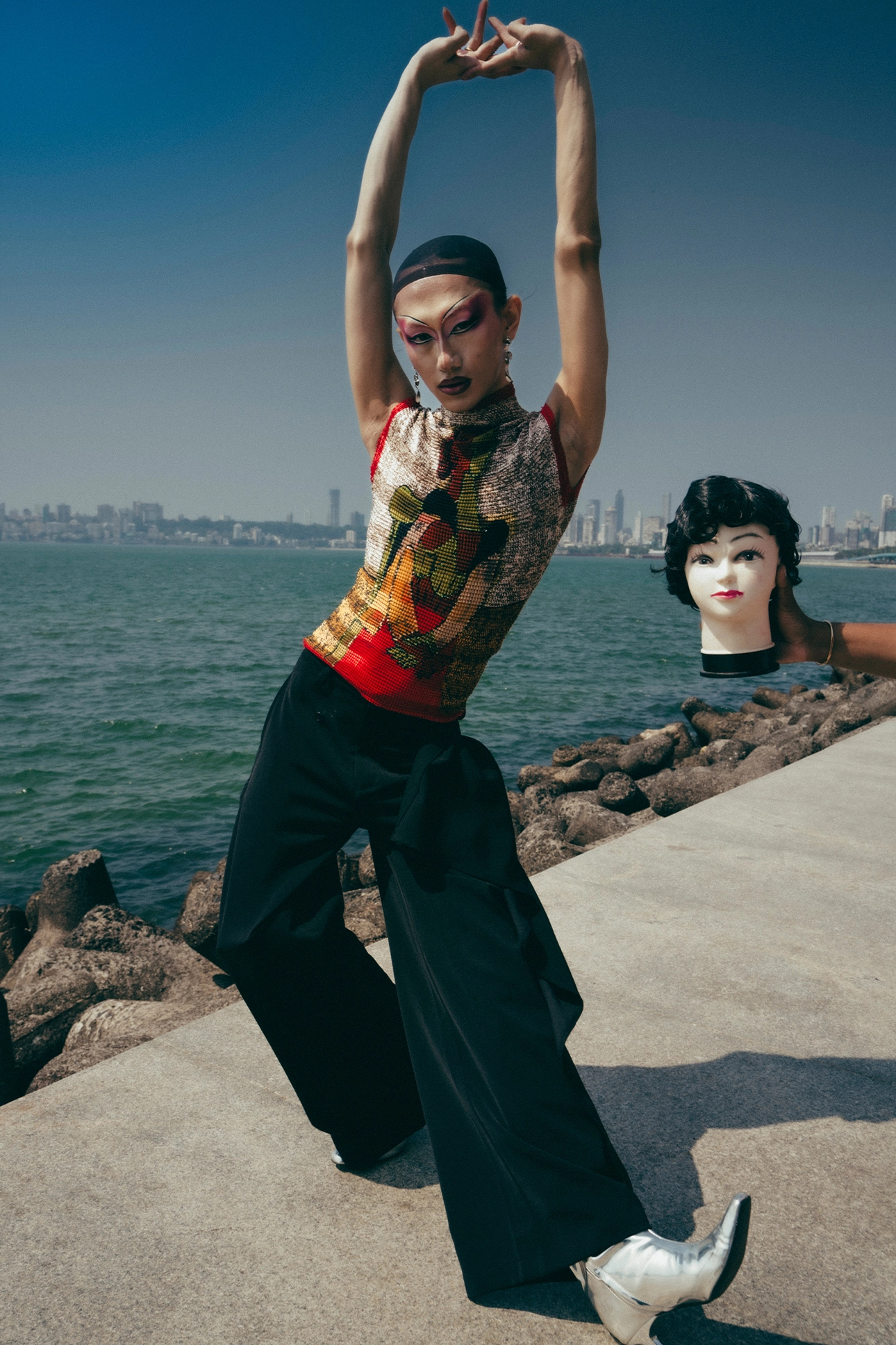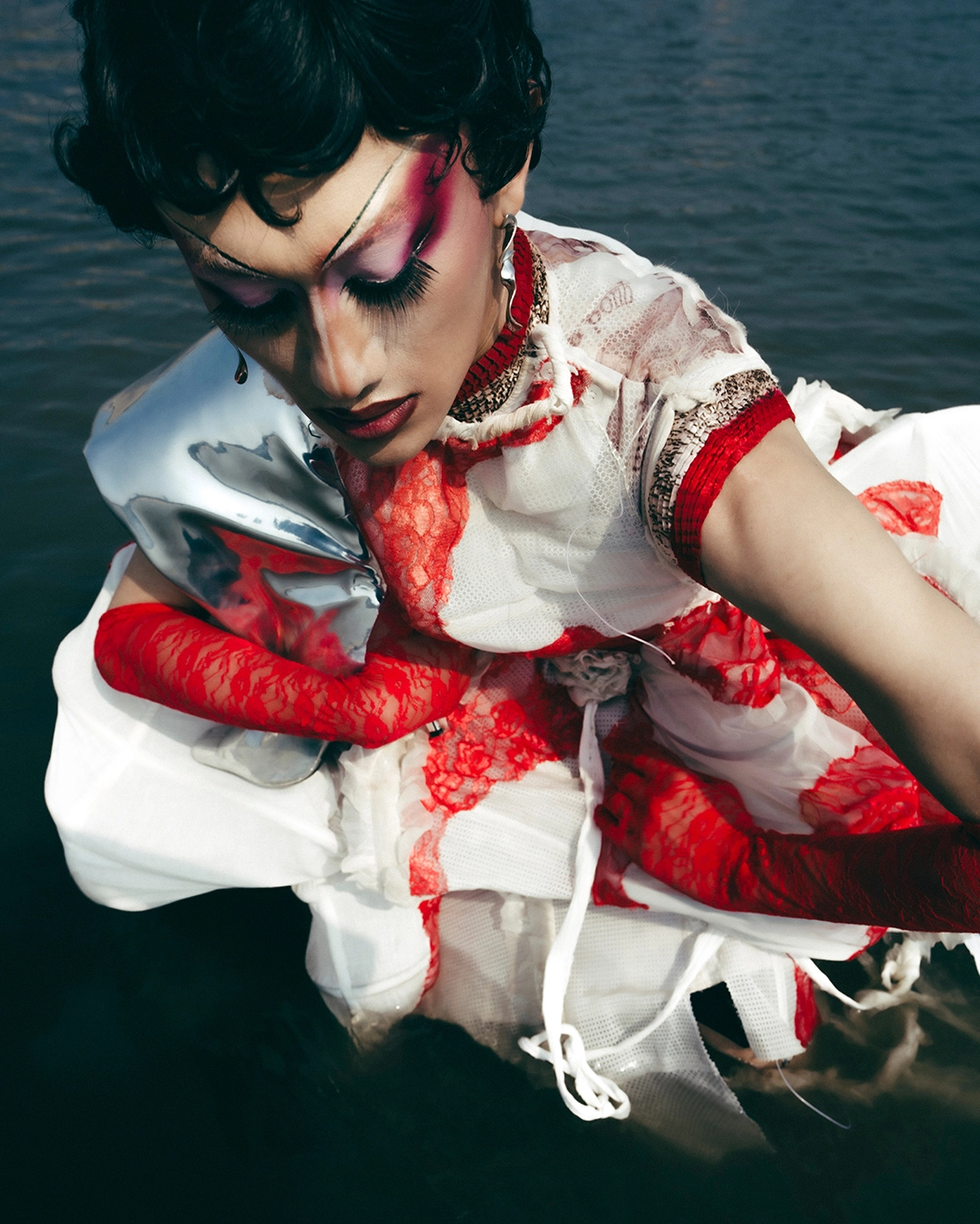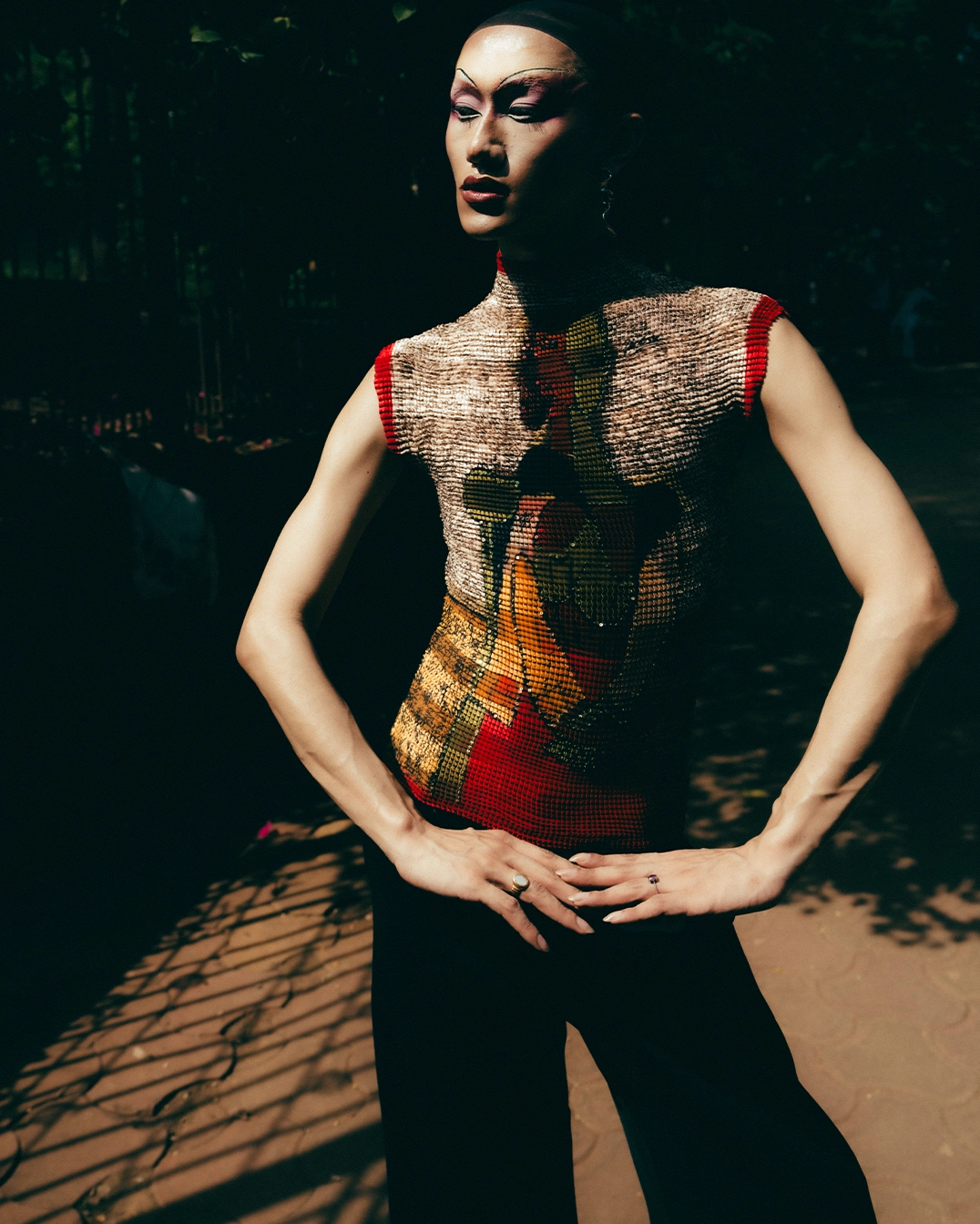Double Roles: Yaikhom Sushiel (Dame Imfala)
Though modelling as a career has its doses of glitzy glamour, it is fast, demanding and fleeting. Verve speaks to four models who have sensitively expanded their repertoire and enriched their lives by simultaneously pursuing their passion for fashion and the arts
Yaikhom Sushiel (Dame Imfala), Mumbai
Drag Artist

Models are — and have always been — the visible face of the fashion and beauty industries. Injecting a certain je ne sais quoi into the brand identity with an ease that almost masks the pains taken to execute the vision of the creative heads, they are one of the primary draws that attract the attention of the viewers — and, by extension, the buyers. But it is well known that despite their integral function to these industries, their “shelf life” is limited.
The digital content business, driven by algorithms, is under constant pressure to produce fresh imagery, leading the fashion industry to churn out content at a hectic, unsustainable pace. The number of fashion collections presented annually has increased from two to four to, in some cases, double digits. Designers, who choose to abide by the same visual codes for more than three seasons — that is, about a year — are declared one-trick ponies by audiences online. The need to be distinctive on platforms frequented by billions drives the image makers of the fashion industry to always be on the hunt for new and, often, younger talent. Perhaps the most vulnerable casualties of this cycle are models. Many — designers, stylists, make-up artists, photographers — often have the leeway to switch up aesthetics but it’s often a matter of time before models lose their visual currency. Additionally, and ironically, being a recognisable face may also translate into losing out on the order of the day — the freshness factor — and jobs.
Interestingly, many are simultaneously following their creative interests in the arts to express their inner muse and thus wearing multiple hats. We take a deep dive into the artistic pursuits of four models in an effort to stand out in the clutter.
Excerpts from the conversation….
How did you get into modelling?
Modelling was never a part of my plan. I discovered modelling through the classic fashion school arc. Senior students and batchmates would pick me, a skinny, androgynous “Asian-looking” individual to model their graduation projects and college assignments. I realised that I had a flair for it and I enjoyed being in front of the camera. When I started assisting designers and stylists at Lakme Fashion Week, I was scouted by Nikhil Dudani of Feat. Artists who signed me on as a talent in their agency and that was my first stint with modelling.
Modelling as a career has undergone so many transformations over the past two decades. Do you find yourself tasked with additional responsibilities and expectations to build or sustain your modelling profile?
I know models have a limited shelf life. There are new and stunning faces being discovered every day so it’s easy to feel replaceable. Besides staying in shape to secure work, I feel the need to stay “fashionably” aware and keep myself updated about new brands and designers. Luckily, all avenues of work I associate myself with involve fashion. All the various opportunities outside of drag have helped me advance my career and improve my skills in drag. I teach fashion and make-up artistry at a university, style fashion editorials and commercial campaigns, and model for brands and magazines. And yet, everything still feels like a lesson for my drag persona.
What role does social media play in your career?
I don’t have a massive following on social media but it’s definitely helped me reach out to a wider audience. When I started freelancing as a model, I would passively look out for modelling work online. Even though it’s small, I have been lucky to have collaborated with a lot of cool brands due to my online presence.
What are the factors that you bear in mind while positioning yourself and your work digitally?
In a digital-first world, being deliberate about how I present myself online is crucial. For me, it’s about creating a cohesive narrative that blends drag artistry with my styling and modelling gigs. I use platforms like Instagram not just as a portfolio but also as a canvas to showcase my multidimensional identity. The challenge lies in staying authentic while adapting to trends that keep the audience engaged. It is not easy to position yourself digitally as a trans person when both content and audience on social media cater to the gender binary.
Are you concerned about being known more for your modelling work than your drag or vice versa?
I believe the lines between my artistic pursuits and modelling are beautifully blurred. While I’m not solely recognised as a model, my work as Dame Imfala — whether on the runway or in the drag scene — speaks to my versatility. Both identities feed into each other, making me distinct in each space.

How do the two careers augment each other?
They’re very much intertwined. Modelling informs my drag, especially when it comes to posing, movement and understanding my body in space. Conversely, drag pushes my boundaries in modelling, allowing me to experiment with bolder looks and unconventional ideas, which drew me to drag in the first place. There are way too many rules in the world. I love the fact that drag has none. Both careers allow me to find joy in work.
Which career takes precedence over the other?
Drag has a more personal and lasting impact on my life because it’s rooted in self-expression and community. Modelling might have a shorter shelf life whereas my work as Dame Imfala is timeless — an ongoing journey of art, identity and storytelling. The goal has always been to put Imphal, my hometown, on the global map of drag. It’s astounding to me that most fellow Indians do not even know where Imphal is.
How did you get into drag and how do you see your practice developing?
I first explored drag in high school in Darjeeling after landing the role of Zuleikha in a rendition of the musical Joseph and the Amazing Technicolor Dreamcoat. It was liberating to experiment with gender expression in an all-boys’ school in a creative way at such a young age. Dame Imfala debuted in 2017 in Mumbai at a gender sensitisation workshop in a corporate office space. Over time, drag has evolved into a medium for storytelling and advocacy for me. I see it growing into a larger platform where I merge fashion, performance and activism. I am part of a drag collective called Dragalactiq and we have been doing the closing act at Magnetic Fields, Rajasthan for the past three years in a row. If all goes well and I don’t get bored of drag, I want Dame Imfala and Dragalactiq to go international in 2025.
The looks for a drag performance take hours of preparation on the day of show and many more hours of planning before that. Do you find yourself worrying about repeating looks? Do you consistently invent new ones?
Repetition feels like stagnation, and drag thrives on reinvention. Dame Imfala’s USP was “never repeating a look” for the first five years. It didn’t make sense because drag is expensive and not sustainable in the Indian market. However, I’ve learned to reimagine old looks with fresh styling or context, giving them new life while staying resourceful. Creativity doesn’t always mean starting from scratch.
Community engagement is an integral part of drag. How has this developed over the years?
Community has always been the backbone of drag. From intimate gatherings to ballroom events, these spaces foster connection and collaboration. Over the years, I’ve seen the drag community grow more inclusive and diverse, especially in India. I was finally able to debut in my hometown Imphal in 2023 in collaboration with Ya_All and Kommune, and I was supported by old and new friends from everywhere. The bonds we create offline ripple into our online interactions, forming a global network of allyship.

How do you compare live performance with performing on social media? What role does social media play in your art form?
The magic of drag lies in the live experience, but digital documentation helps extend its reach. I focus on capturing the essence of my performances through editorial-quality photos and videos, ensuring they convey the energy of the moment. These are moments that cannot be recreated. Social media becomes a gallery for my art, preserving it for a wider audience.
While nothing beats the electric energy of a live performance in a crowded room, social media has democratised drag. You see young queer kids dressing up in drag for the ’gram and otherwise. They are all contributing to this larger digital queer movement that I am so proud to be part of. Social media allows me to connect with audiences who might not have access to such physical events and share my art with the world. Both spaces are essential and complement each other beautifully. I am not a drag influencer yet, my audience is primarily on Instagram and they are mostly friends and friends of friends. I don’t want to be a viral reel queen and attract unnecessary hate. I haven’t had to deal with it so far. Maybe I should try YouTube. I have heard that there are less haters there.
Does your drag practice seep into your modelling work? Has it helped you land modelling gigs?
My drag persona pushes boundaries and has opened up opportunities in modelling that might not have been accessible otherwise. A lot of brands reach out to me because of my diverse background and skills in performing arts and fashion. Modelling informs my drag by refining my movements and understanding of visual storytelling. I like to use fashion as performance in my drag practice. Each amplifies the other.
What’s a modelling project that you loved working on?
One of my favourite modelling projects is an editorial story shot for the book-series Far-Near by Ali Monis Naqvi for the New York Art Book Fair (2024). It was “an ode to divergent voices and artists who follow their gut even in the face of ridicule, who express passionate outcries of love despite opposition”. I performed in absolute silence alone and with the model Elton [John] on an empty terrace under a burflower or kadamba tree till 3 a.m. on a humid July night somewhere in West Bengal; a few hours away from Kolkata. Ali ended up taking more than 200 beautiful pictures over two days and some of them were published as a zine by Far-Near even though it wasn’t originally planned.
Where have you lived — and which place has grown on you?
I have been based out of Mumbai since 2016. I was born in Imphal, Manipur where I spent my childhood years. I moved to West Bengal in 2003 (Santiniketan and Darjeeling) for schooling where I was exposed to different cultures from across the world. I also studied textile design in Tamil Nadu for over a year before finally moving to Mumbai to study fashion design. I have never lived in Delhi and had not made a trip up north until 2021. It’s safe to say the city’s eclectic culture has grown on me over time and I cannot do without seeing my best friend who lives there and having a North-Eastern thali or meal in Humayunpur every year.